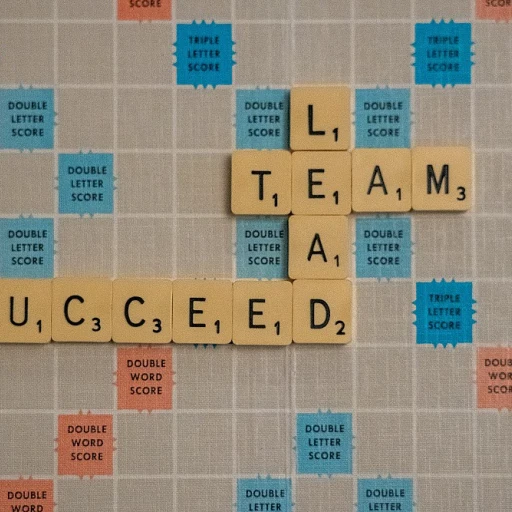
Understanding the Role of a Medical Assistant
The Diverse Responsibilities of a Medical Assistant
To excel in crafting an effective medical assistant resume, it's crucial to first understand the multifaceted role medical assistants play within the healthcare system. They bridge the gap between clinical and administrative duties, ensuring smooth operations in any medical setting.
In terms of clinical responsibilities, medical assistants are often tasked with taking vital signs, preparing patients for examinations, and assisting physicians during procedures. Their direct involvement in patient care not only facilitates efficient healthcare delivery but also supports patient education, an essential component in enhancing patient outcomes.
Simultaneously, the administrative aspects of a medical assistant's job include managing electronic health records, scheduling appointments, and ensuring that the medical office's administrative processes are streamlined to reduce wait times and maintain professional healthcare standards.
The role can vary significantly based on the healthcare environment. For instance, working in a pediatric clinic may require specialized knowledge related to pediatric medical care, whereas a position in a large medical office may focus more on administrative proficiency. A successful medical assistant must adeptly balance these diverse skills and responsibilities to meet the demands of the profession.
Essential Components of a Medical Assistant Resume
Building the Foundation of Your Resume
Creating a medical assistant resume requires a clear understanding of the essential components that hiring managers look for. Your resume should effectively showcase your qualifications, experiences, and skills, tailored to the specific demands of the healthcare industry. Here’s how you can structure your resume to make a strong impression:
- Contact Information: At the top of your resume, include your full name, phone number, email address, and location. Make sure this information is current and professional.
- Professional Summary: Craft a concise summary that highlights your career achievements and objectives. This section should reflect your commitment to patient care and your ability to support healthcare professionals in clinical and administrative tasks.
- Skills: List relevant skills that align with the job description. Focus on both clinical skills, such as taking vital signs and assisting with medical procedures, and administrative skills, like managing electronic health records and scheduling appointments.
- Work Experience: Detail your professional journey, emphasizing roles that demonstrate your ability to provide quality patient care and support in a medical office setting. Include job titles, employers, and dates of employment.
- Education and Certifications: Highlight your educational background, including any degrees or certifications in medical assisting or related fields. Mention if you are a certified medical assistant, as this can significantly enhance your resume.
- Additional Sections: Consider adding sections for volunteer work, languages spoken, or specialized training, especially if they are relevant to the healthcare environment you are applying to.
For a deeper understanding of the medical assistant role and how it influences your resume structure, you can explore this comprehensive guide.
Highlighting Relevant Skills and Experiences
Showcasing Your Expertise and Abilities
When crafting your medical assistant resume, it's crucial to highlight the skills and experiences that make you an ideal candidate for the job. This not only involves listing your professional history but also demonstrating how your background aligns with the demands of the healthcare industry. Here’s how you can effectively present your career journey:
- Clinical and Administrative Skills: Clearly differentiate between your clinical and administrative abilities. For example, mention your proficiency in taking vital signs, performing procedures, and managing electronic health records. Highlight your experience in handling patient care and supporting the smooth operation of a medical office.
- Patient Interaction: Emphasize your patient education skills and your ability to provide compassionate care. Mention any experience you have in reducing wait times and improving patient satisfaction, as these are key indicators of your effectiveness in a clinic setting.
- Certified Expertise: If you are a certified medical assistant, make sure to include this credential. It demonstrates your commitment to the medical assisting profession and assures potential employers of your education and training.
- Specialized Experience: Tailor your resume to reflect any specialized experience you have, such as working in a pediatric medical environment or supporting clinical medical research. This can set you apart from other medical assistants by showcasing your unique capabilities.
By carefully curating your resume to highlight these aspects, you can better position yourself for success in the competitive healthcare job market. For more insights on navigating complex hiring environments, consider exploring this comprehensive guide.
Tailoring Your Resume for Different Medical Settings
Adapting Your Resume for Various Healthcare Environments
The role of a medical assistant is versatile, and your resume should reflect that adaptability. With the broad spectrum of healthcare environments you can work in—from busy hospitals to small clinics—tailoring your resume is crucial. It’s not about overhauling your resume each time, but more about making strategic adjustments that highlight relevant attributes for the specific setting.- Hospital Settings: Hospitals are often fast-paced and require medical assistants who can handle multiple responsibilities efficiently. In this environment, emphasize your clinical skills and experiences in taking vital signs or managing electronic health records. Highlighting your experience with patient care procedures and managing long wait times can also make you stand out.
- Small Clinics or Physician Offices: These settings often mean closer patient interaction and a varied blend of administrative and clinical tasks. Here, showcasing your abilities in patient education and administrative support, such as health records management, can be beneficial. Demonstrating your interpersonal skills and ability to foster a supportive environment for patients can speak volumes.
- Specialty Clinics: Whether it's pediatric medical settings or other specialties, pinpoint which specific skills align with the specialty of the clinic. Showcasing relevant certifications, like having a certified medical assistant background or specific clinical medical procedures you are proficient in, can be advantageous. Tailor this section to the unique demands of the specialty.
- Community Health Centers: In these centers, the focus might be on broader public health and preventive care. Experience in educating patients, conducting health screenings, or supporting public health initiatives can set your resume apart.
Common Mistakes to Avoid in Your Resume
Avoiding Common Pitfalls in Your Medical Assistant Resume
When crafting your medical assistant resume, there are several traps that applicants can easily fall into. By knowing these common mistakes, you can ensure your resume stands out in a competitive healthcare market. One common error is failing to highlight your skills and experience effectively. Medical assistants engage in a variety of tasks from patient care to administrative duties. Your resume should clearly reflect the breadth of your capabilities, whether it's taking vital signs, managing electronic health records, or using clinical procedures. Be sure to include examples of both your clinical and administrative skills to present a well-rounded professional image. Another misstep is being too vague about your work experience. Precision is key. If you've worked with pediatric medical patients or in a fast-paced clinic environment, specify this to give employers a better understanding of your background. Highlight relevant experience, such as patient education or reducing wait times through efficient patient care processes. It's also important to avoid using an overly generic resume template. Tailor your resume to fit the specific medical setting you're applying to, whether a large hospital, a private clinic, or a physician's office. This tailored approach demonstrates your awareness of the unique demands of each role. Moreover, consider the educational and certification aspects of your resume. Whether you're a certified medical assistant or have specialized training, such as in bls support, make sure these qualifications are well-represented. Education in science medical fields is often a solid component of a successful assistant resume. By circumventing these common pitfalls and ensuring your resume is both comprehensive and specific, you'll significantly enhance your chances of landing a job in the rewarding field of healthcare.Leveraging Keywords for Applicant Tracking Systems
Optimizing for Applicant Tracking Systems with Strategic Keyword Use
Crafting a medical assistant resume that passes seamlessly through Applicant Tracking Systems (ATS) requires strategic use of keywords. Since many healthcare facilities implement ATS to streamline the hiring process, integrating relevant keywords from the job description into your resume is crucial. Incorporate specific terms related to your "medical assistance skills," such as "patient care," "vital signs," or "electronic health records," that reflect both the clinical and administrative facets of your role. Ensuring these keywords naturally exist within the context of your "professional experience" and "educational background" can enhance the compatibility of your resume with ATS algorithms. How to Effectively Integrate Keywords:- Analyze Job Descriptions: Carefully read the medical assistant job posting to identify common keywords. These may include "certified medical," "pediatric medical," and "patient education."
- Reflective of Experience: Ensure your experience section clearly describes your "clinical medical" duties using terms like "health records management" and "patient care procedures."
- Skills Highlight: In the skills section, use terms like "support BLS" and "administrative tasks" to echo the precise "job requirements."
- Educate for Impact: Within your education section, specify any relevant "science medical" qualifications you possess, which underscore your "healthcare" expertise.












